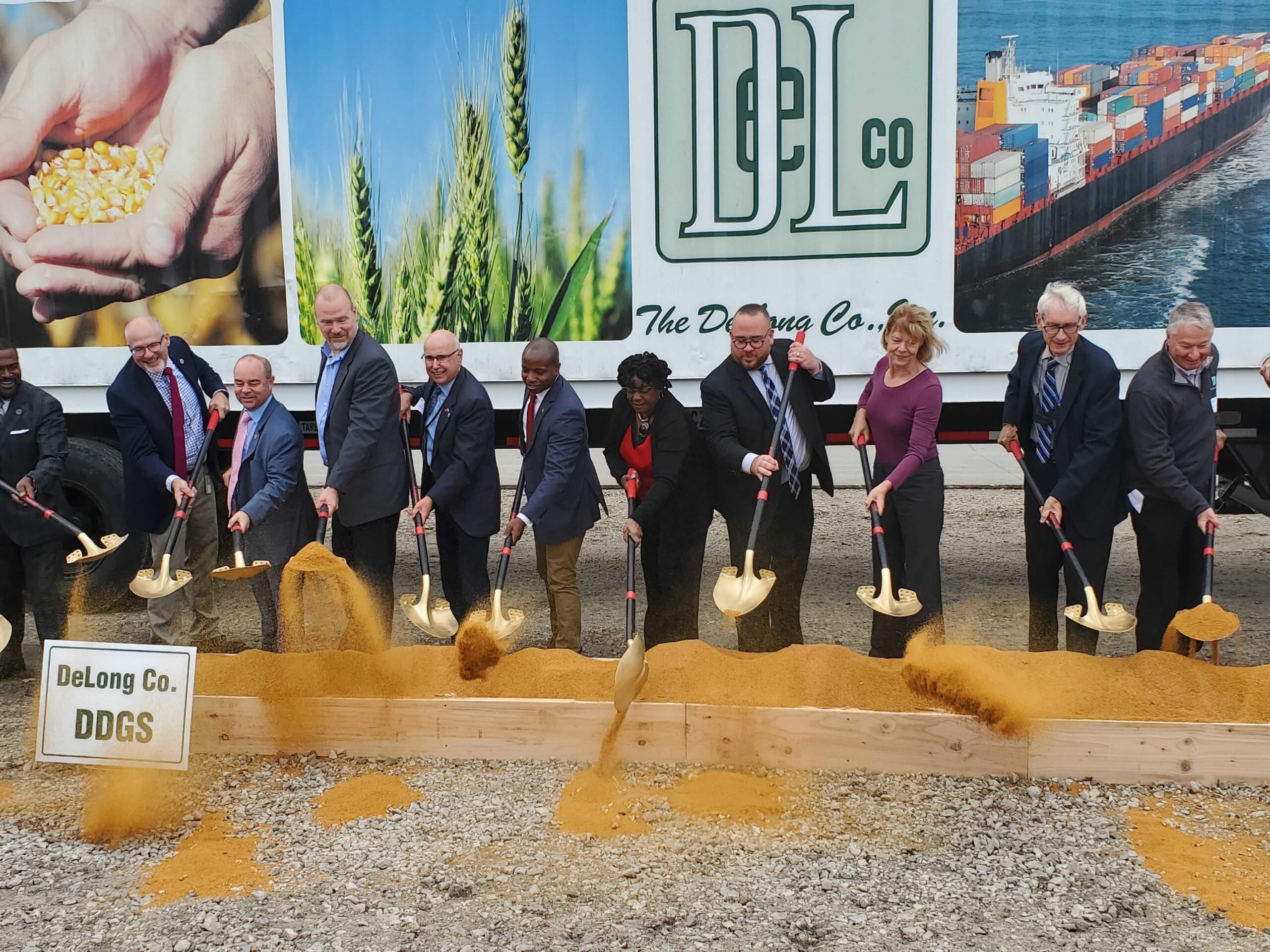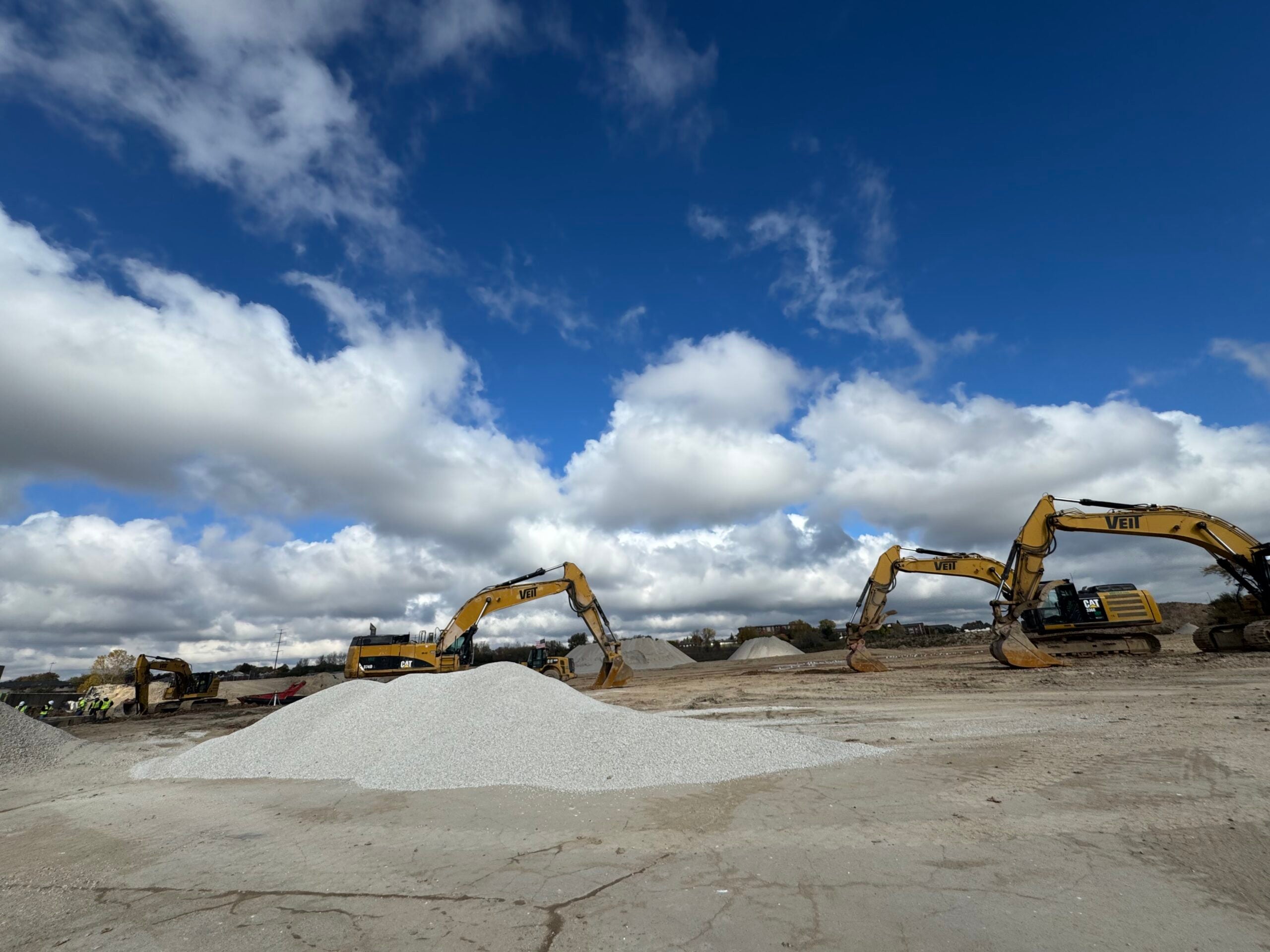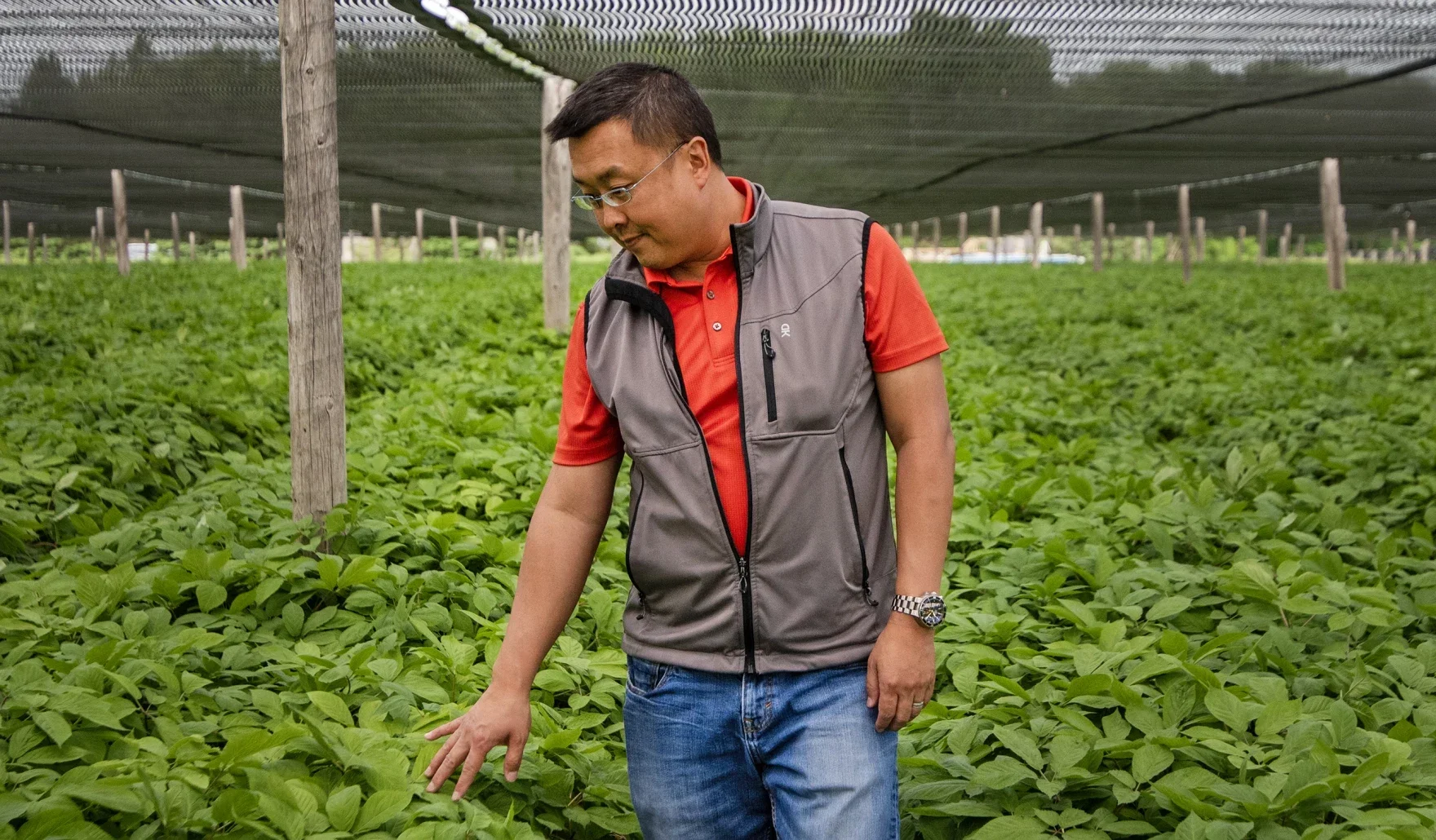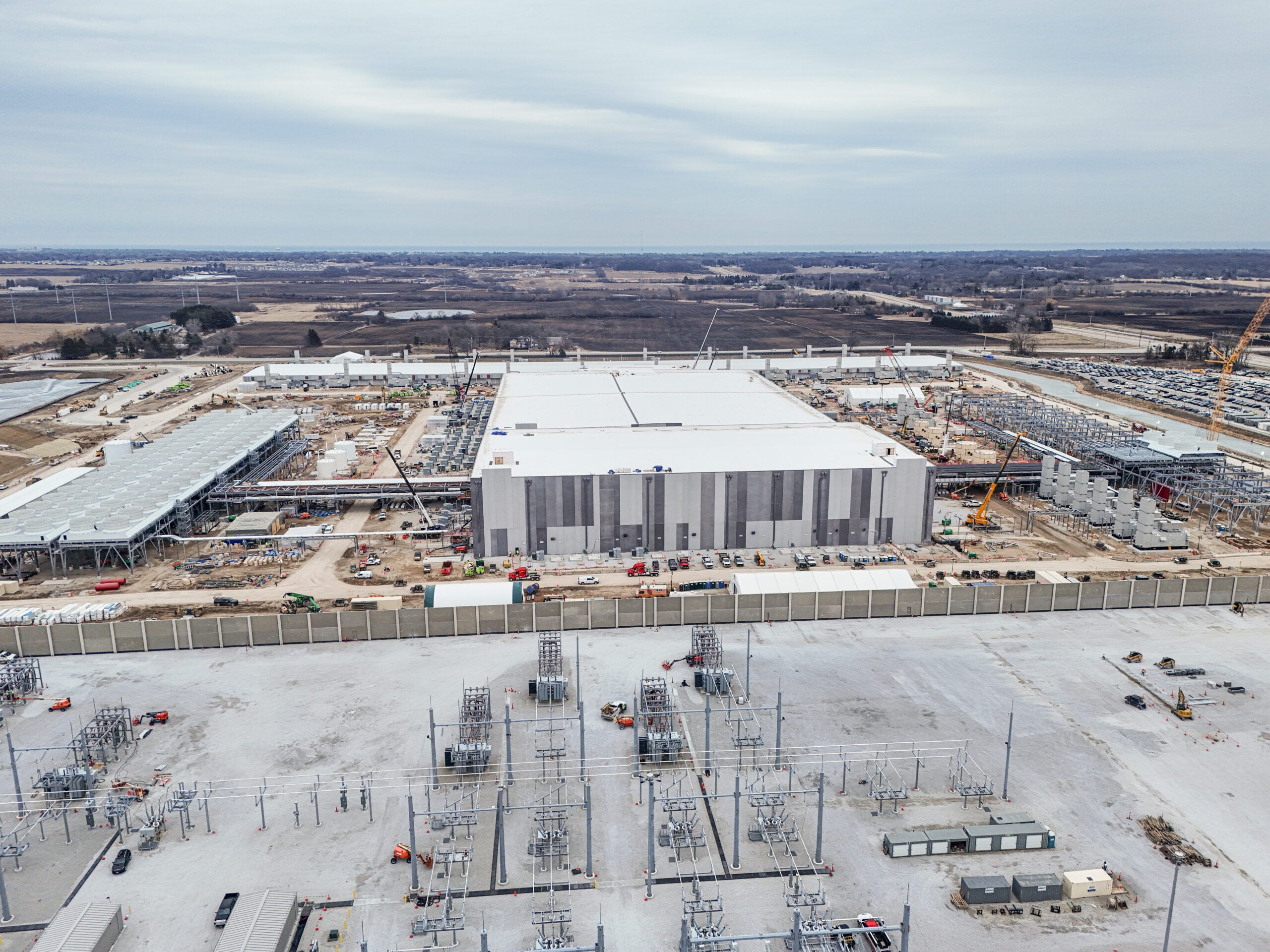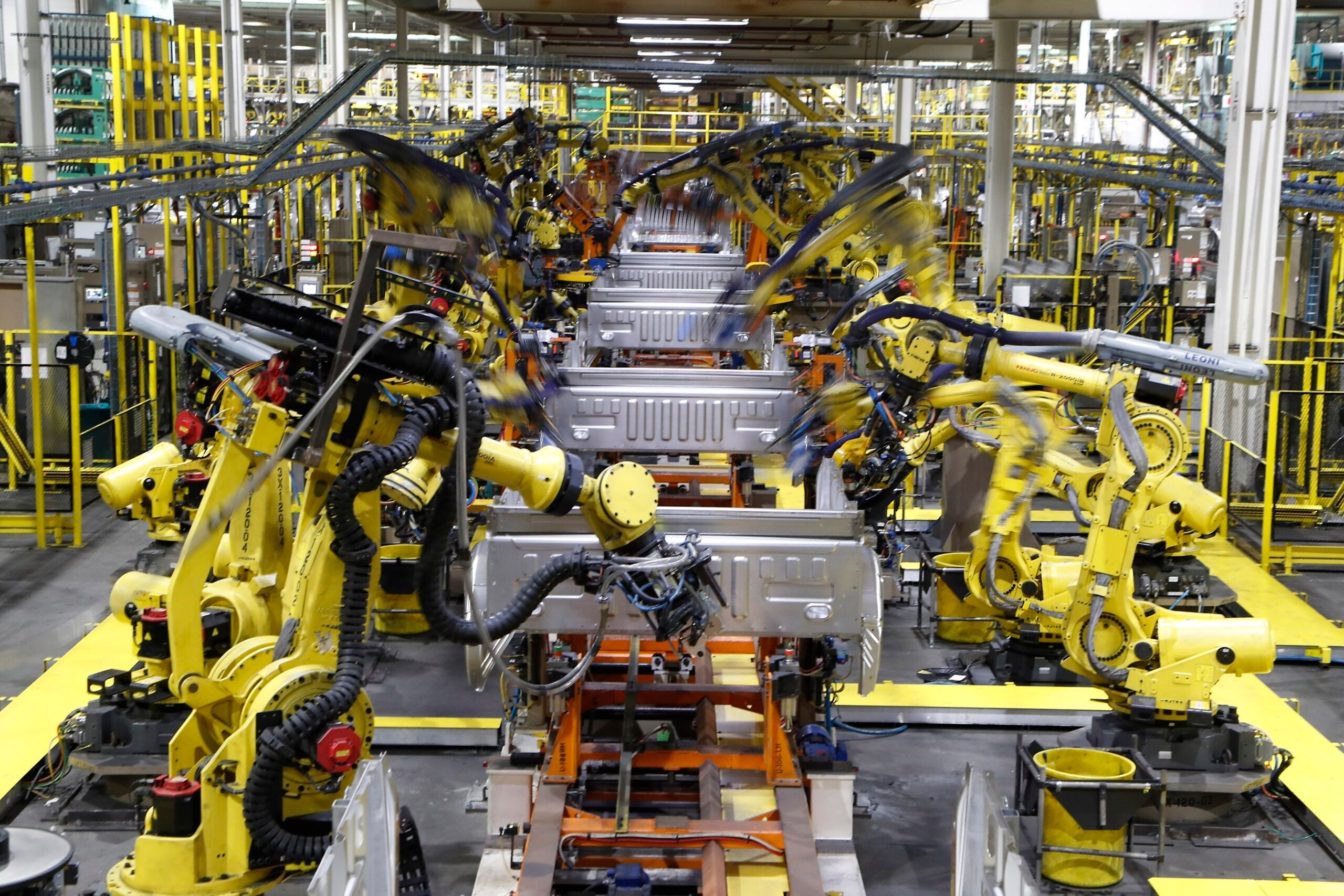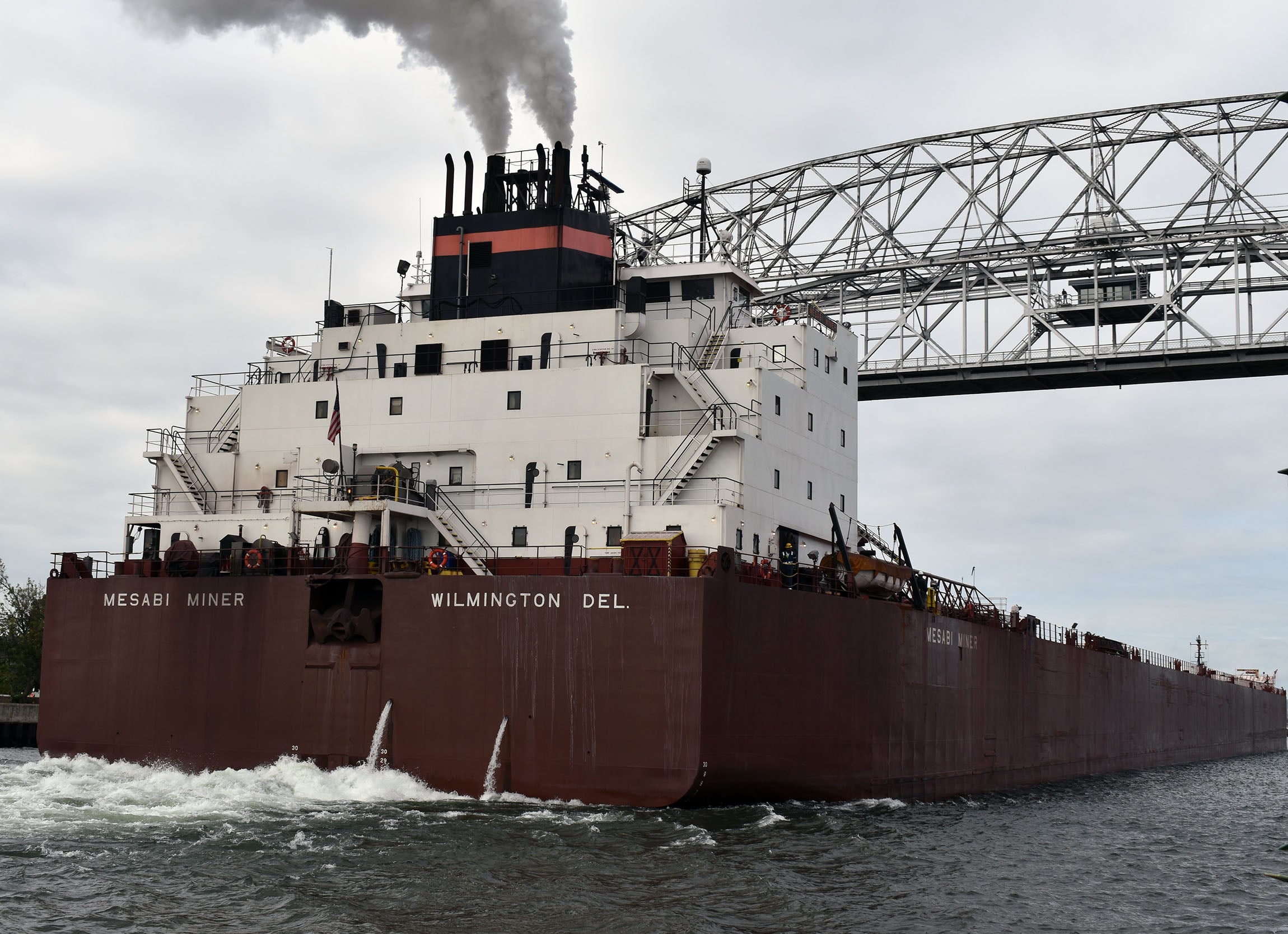Port Milwaukee broke ground Wednesday on a new shipping facility for agricultural products on Jones Island. The nearly $35 million DeLong Agricultural Maritime Export Facility will be the largest one-time investment in Port Milwaukee since the 1950s.
“This investment in our transportation infrastructure will expand farmers’ access to international markets, it will create jobs for Milwaukee workers, and help grow our made-in-Wisconsin economy,” said U.S. Sen Tammy Baldwin during a press conference at the port Wednesday.
The port is partnering with Clinton-based agricultural supplier The DeLong Co. to develop the new facility. It will be one of the first facilities in the Great Lakes-St. Lawrence Seaway to move bulk agricultural exports through intermodal transportation. Instead of sending products down the Mississippi River, Wisconsin farmers and businesses can send their products by truck or rail directly to the new facility where they will be loaded onto international shipping vessels.
News with a little more humanity
WPR’s “Wisconsin Today” newsletter keeps you connected to the state you love without feeling overwhelmed. No paywall. No agenda. No corporate filter.
The DeLong Co. moves about $1 billion worth of agricultural exports annually and will now be able to do that directly from Wisconsin, while reaching new markets in Europe, the Middle East, the Mediterranean and northern Africa, said DeLong Vice President Bo DeLong.
“It allows a Wisconsin company to export Wisconsin products through the Port of Milwaukee,” DeLong said.
The new facility is specifically designed for the export of dried distillers grains — a byproduct from beer and ethanol production that is used in livestock feed. DeLong estimates the new facility will allow for at least $40 million of these exports annually, growing their business by 50 percent. In the future, the facility will also handle Wisconsin-grown soybeans, corn and grain.
“Connecting Port Milwaukee to granaries and farms throughout the state, we’re building stronger ports, rails and roads so that when we add one piece to the puzzle, everything that’s connected grows,” said Wisconsin Department of Transportation Secretary Craig Thompson. “That is a smart investment for the state of Wisconsin.”
Thompson said the new facility will contribute to an estimated $95 million in annual gross income for the state during its first year of operation.
The project is partially funded by a $15.9 million federal grant from the U.S. Department of Transportation. Additional funding for the new facility comes from The DeLong Company ($7 million), Port Milwaukee ($5.7 million) and grants from the Wisconsin DOT ($6.2 million).
“This project represents the coming together of local, state, federal and private partners to invest in the future of our great state,” said Baldwin. She added that the new facility is an example of the kind of improvements federal infrastructure bills can bring.
“By 2045, port infrastructure investments like this one could produce economy-wide returns of between two to $3 per every dollar spent,” said Baldwin.
The construction started Wednesday will involve the demolition of 1950s-era structures that were built when the St. Lawrence Seaway was first developed, said Port Milwaukee Director Adam Tindall-Schlicht. The new building will include updated transload facilities, conveyance systems and storage structures. Officials say the new facility is expected to open by April 2023, just in time for Port Milwaukee’s international shipping season.
“This project is about realizing agricultural opportunities through international connectivity,” said Tindall-Schlicht. “It is about reaffirming Port Milwaukee’s role in advancing economic activity in the city of Milwaukee, in the state of Wisconsin and throughout the Great Lakes region.”
Editor’s note: Christine Hatfield contributed reporting to this story. This story was updated on Thursday, Oct. 14, 2021, to reflect that the facility is one of the first – not the first – to move agricultural exports by intermodal transportation.
Wisconsin Public Radio, © Copyright 2025, Board of Regents of the University of Wisconsin System and Wisconsin Educational Communications Board.

